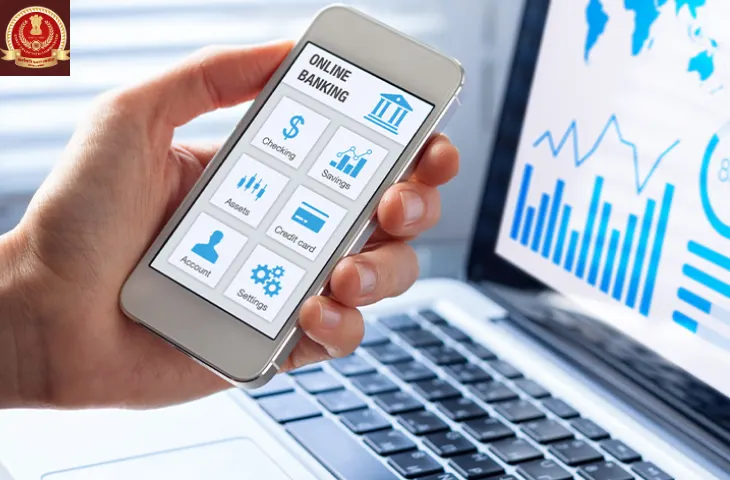The concept of e-Banking, or electronic banking, allows customers to conduct banking transactions online using a computer, smartphone, or other digital devices. It eliminates the need to visit a physical bank branch for everyday transactions. e-Banking is convenient, secure, and available 24/7, making banking easier for individuals and businesses.
What is e-Banking?
The term e-Banking refers to performing financial transactions electronically over the internet or mobile networks. This includes checking account balances, transferring money, paying bills, and more. It is also called online banking, internet banking, or digital banking. Below are some benefits of e-Banking:
- Access your bank account anytime, anywhere.
- Faster money transfers compared to traditional banking.
- Reduced paperwork and manual processes.
- Instant alerts and notifications for transactions.
- Convenient bill payments and online shopping payments.
Types of e-Banking Services
Banks offer several types of e-Banking services to make banking easier:
| Service Type | Description |
| Internet Banking | Access accounts and perform transactions online via a bank’s website. |
| Mobile Banking | Use a mobile app to manage accounts and transfer money. |
| ATM Services | Withdraw cash, check balances, and deposit money via ATMs. |
| Telebanking | Banking services via phone calls using IVR or customer service. |
| Electronic Fund Transfer (EFT) | Transfer money between accounts electronically. |
Common Transactions in e-Banking
e-Banking allows you to perform a variety of transactions safely and efficiently:
- Check account balance and statements.
- Transfer funds between your accounts or to other bank accounts.
- Pay utility bills such as electricity, water, and phone.
- Recharge mobile phones and DTH connections.
- Apply for loans, fixed deposits, and other banking products online.
Security Measures in e-Banking
Security is important in e-Banking. Banks use multiple measures to protect customer accounts:
- Two-factor authentication: OTPs and passwords to verify identity.
- Encryption: Protects sensitive data during transactions.
- Secure login: Avoid logging in from public devices.
- Regular alerts: Notifies customers of transactions to detect fraud.
- Strong passwords: Use complex passwords and change them regularly.
Also check out: SSC CGL Typing Test Errors to minimize your errors in Data Entry Speed Test.
Advantages & Disadvantages of e-Banking
E-Banking, or electronic banking, allows customers to perform financial transactions online without visiting a bank branch. While it offers convenience, speed, and accessibility, it also comes with certain risks and limitations. Understanding both the benefits and drawbacks helps users make informed decisions and use digital banking services safely.
| Aspect | Advantages | Disadvantages |
| Accessibility | 24/7 access to accounts | Requires internet access and digital literacy |
| Convenience | Saves time; avoids bank visits | Limited personal interaction compared to branch banking |
| Speed | Faster transactions and payments | Dependent on technical systems; downtime can affect access |
| Eco-friendly | Reduces paper usage | Risk of cyber fraud and phishing attacks |
| Record Keeping | Easy tracking of financial records | Users need to monitor security and transactions carefully |
Key Takeaways:
Below are the key takeaways:
- e-Banking allows performing banking transactions anytime, anywhere using digital devices.
- It offers faster money transfers, instant alerts, and convenient online payments.
- Services include internet banking, mobile banking, ATMs, telebanking, and electronic fund transfers.
- Common transactions include checking balances, transferring funds, paying bills, and applying for banking products online.
- Security measures like two-factor authentication, encryption, secure login, alerts, and strong passwords help protect accounts.
- Advantages: saves time, 24/7 access, faster transactions, eco-friendly, easy record keeping.
- Disadvantages: requires internet and digital literacy, limited personal interaction, cyber fraud risks, and dependence on technical systems.
FAQs
Ans. E-Banking, or electronic banking, allows customers to perform financial transactions online using computers, smartphones, or other digital devices without visiting a bank branch.
Ans. Key services include Internet Banking, Mobile Banking, ATM services, Telebanking, and Electronic Fund Transfers (EFT).
Ans. You can check account balances, transfer funds, pay utility bills, recharge mobile/DTH, and apply for loans or fixed deposits online.
Ans. Yes, banks use security measures such as two-factor authentication, encryption, secure login, regular alerts, and strong passwords to protect accounts.
Ans. e-Banking offers 24/7 access, saves time, enables faster transactions, reduces paperwork, and allows easy tracking of financial records.
- SSC CGL टॉप 5 हाई पेइंग जॉब्स कौन-सी हैं?, पूरी जानकारी यहां
- SSC CGL की तैयारी के लिए सबसे अच्छी किताबें कौन-सी हैं? यहां चेक करें
- SSC CGL पोस्ट प्रेफरेंस, SSC CGL की सबसे अच्छी पोस्ट क्या है?
- SSC CGL के लिए योग्यता क्या है? आयु सीमा, शिक्षा, शारीरिक मापदंड और अधिक
- Most Repeated Quantitative Aptitude Questions for SSC CHSL 2025
- SSC CGL Tier 2 Arithmetic Questions, Download PDF

I’m Mahima Khurana, a writer with a strong passion for creating meaningful, learner-focused content especially in the field of competitive exam preparation. From authoring books and developing thousands of practice questions to crafting articles and study material, I specialize in transforming complex exam-related topics into clear, engaging, and accessible content. I have first hand experience of 5+ months in SSC Exams. Writing, for me, is not just a skill but a way to support and guide aspirants through their preparation journey one well-written explanation at a time.
